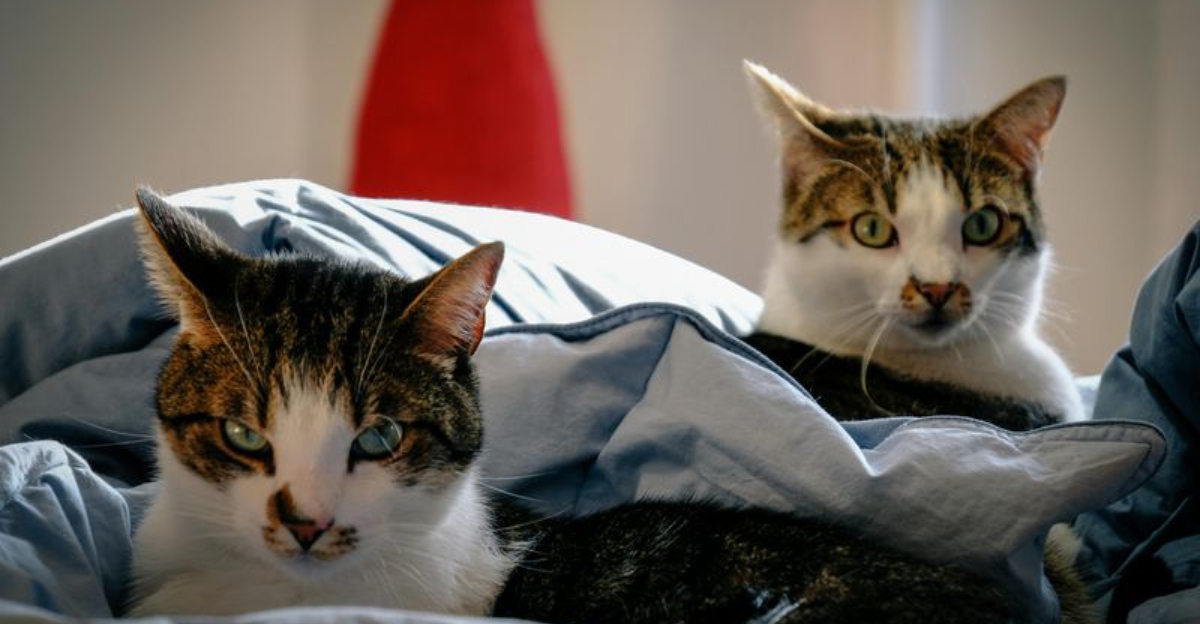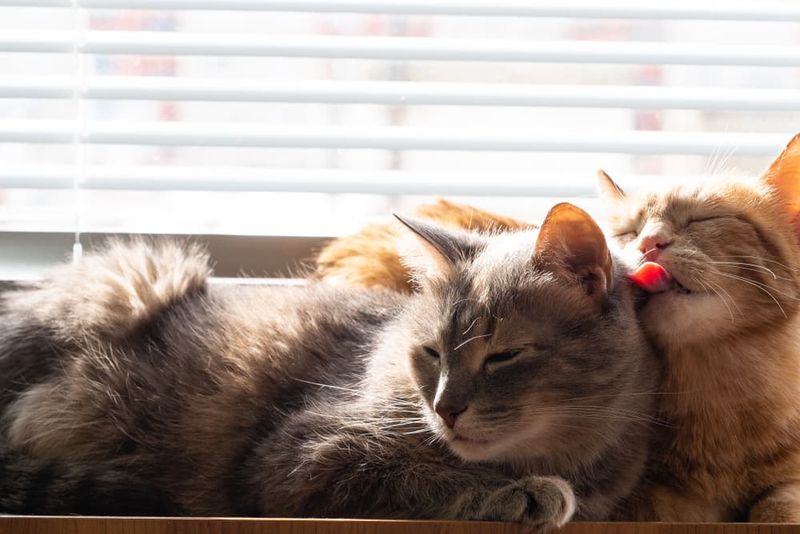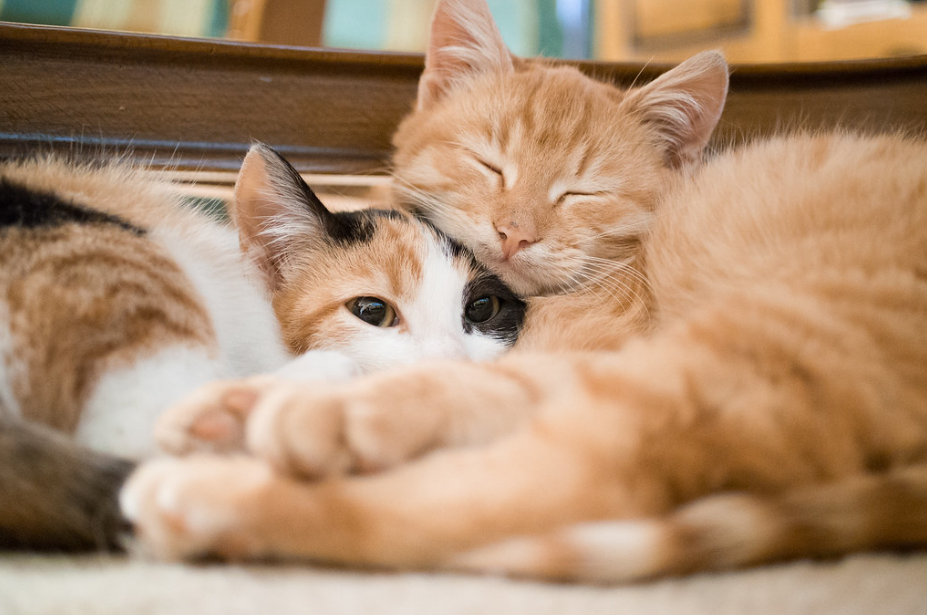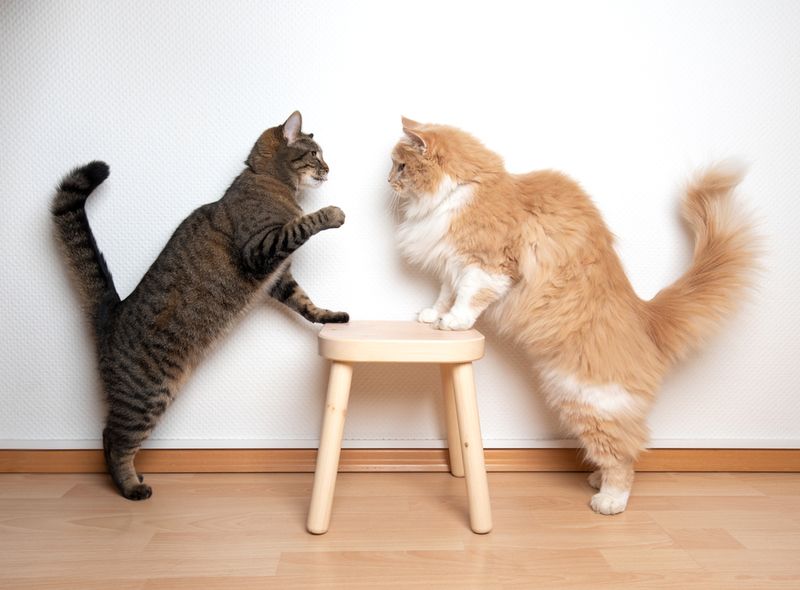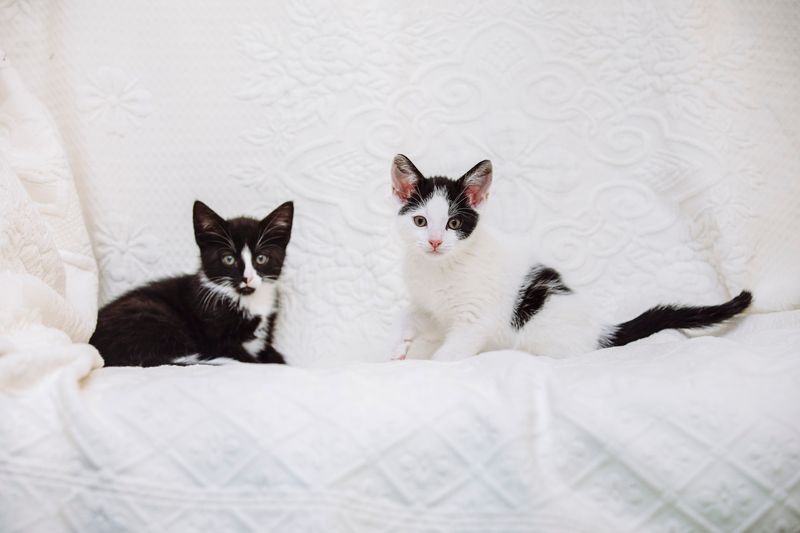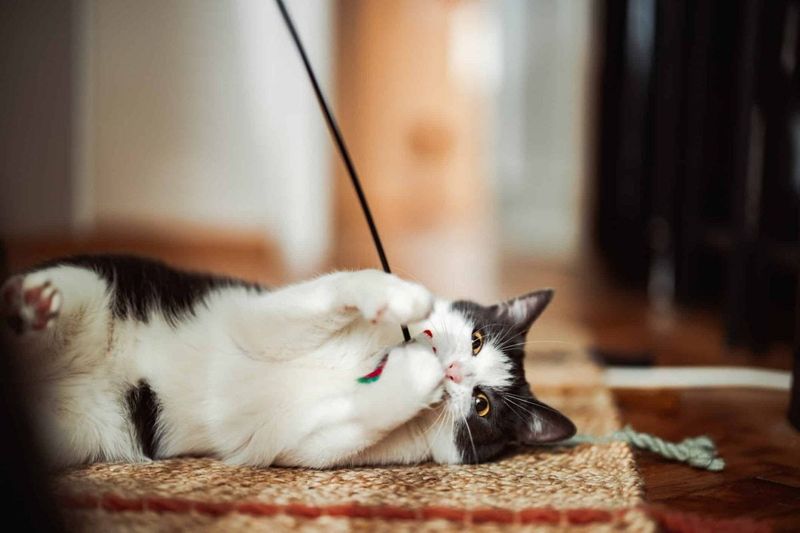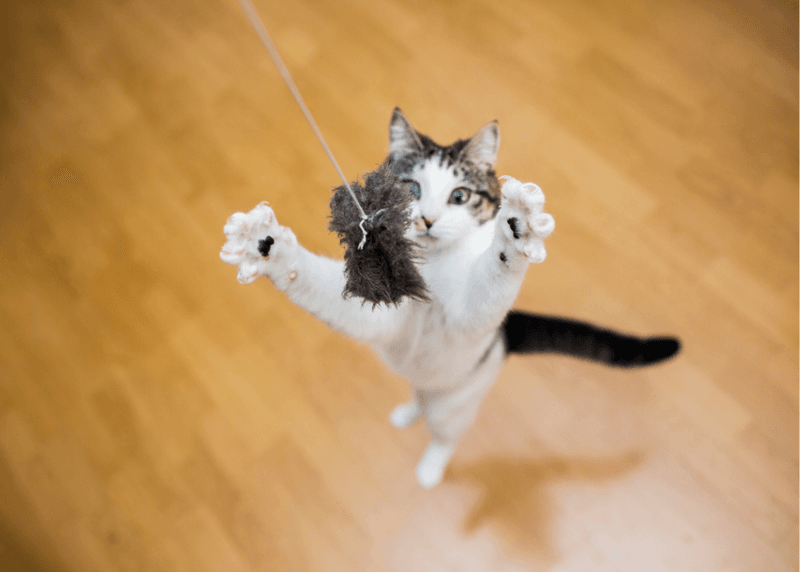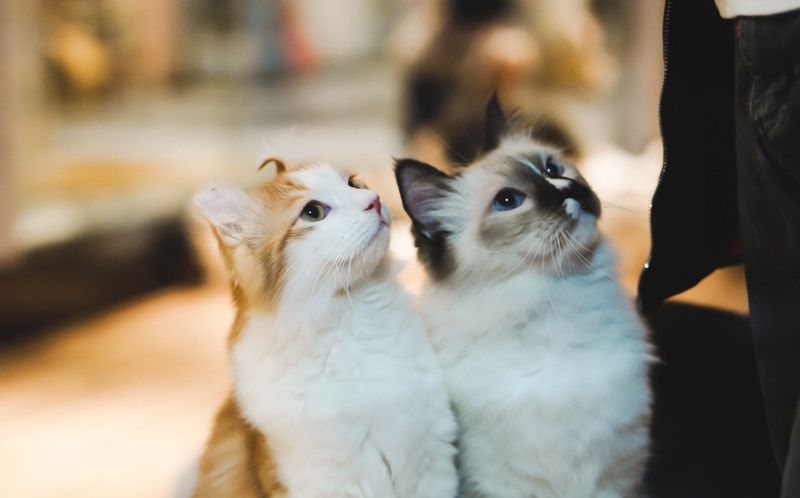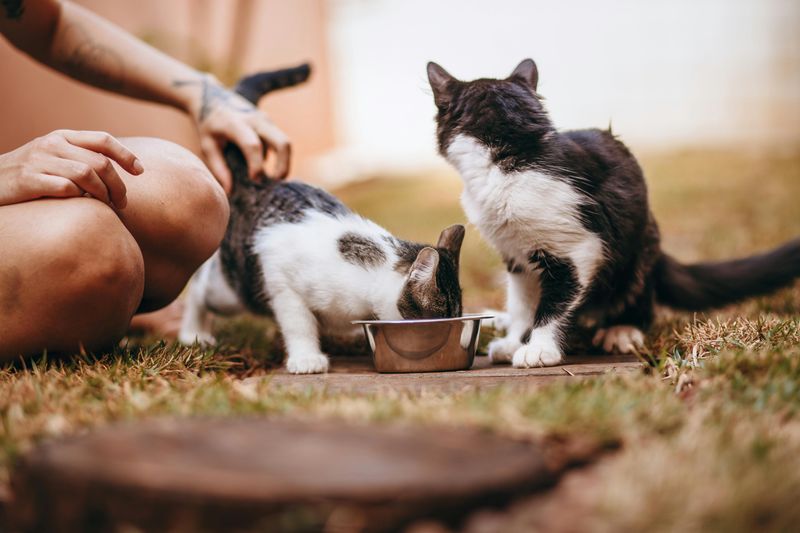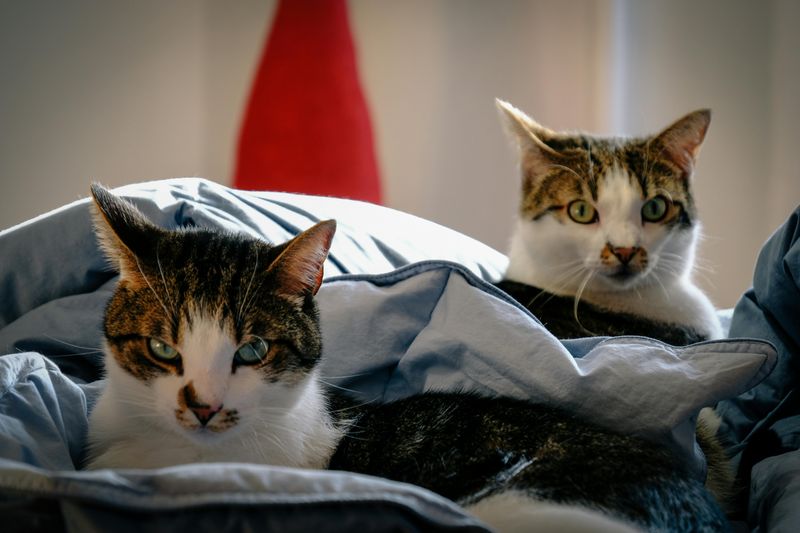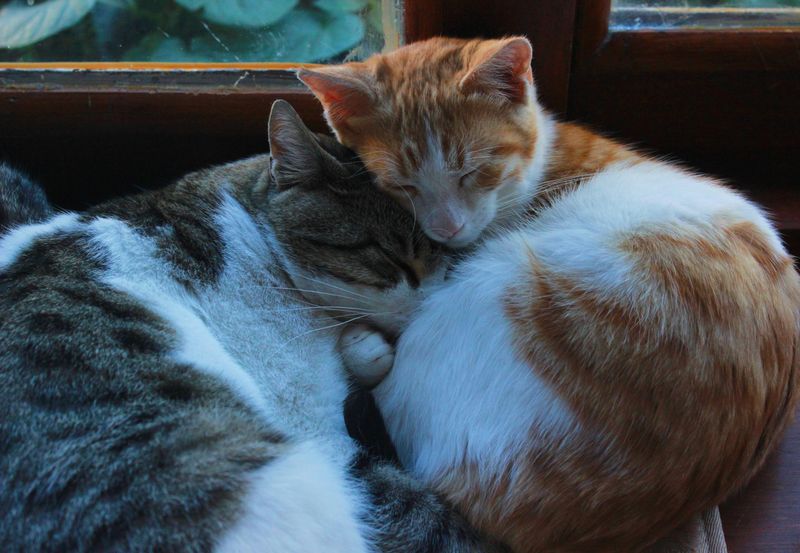📖 Table of Content:
- 1. They Groom Each Other (Allogrooming)
- 2. They Sleep Cuddled Together
- 3. They Play Without Aggression
- 4. They Seek Each Other Out
- 5. They Share Food, Toys, and Space
- 1. Engage in Group Play Sessions
- 2. Use Scent Exchange and Grooming Tools
- 3. Feed Them Together (With Space!)
- 4. Provide Shared Cozy Spaces
- 5. Minimize Stressful Separations
Whether they’re curled up together on a sunny windowsill or grooming each other before a nap, bonded cats display a unique kind of companionship that goes beyond mere cohabitation. It’s not just adorable — it’s a sign of deep trust, comfort, and affection between them.
But how can you tell if your cats are truly bonded? It’s not always obvious, especially since cats express emotions in more subtle ways than dogs or humans. From body language to behavior, there are clear signs that can indicate your cats are more than just housemates — they might be soulmates. And once you recognize those signs, you’ll be in a better position to support and strengthen their relationship.
In this article, we’ll walk you through five telltale signs that your cats are a bonded pair, and share five simple, effective ways you can nurture and encourage that bond. Whether your cats are lifelong companions or just getting to know each other, these tips will help ensure their relationship stays strong, healthy, and full of love. After all, a happy cat duo makes for a peaceful, affectionate home.
1. They Groom Each Other (Allogrooming)
You may spot one cat gently licking the other’s head or neck — this is allogrooming, and it’s a major sign of trust. Rather than grooming just for cleanliness, they’re showing affection. It often happens during quiet, calm moments when they feel safe together. Many cats will even close their eyes while being groomed, a clear indicator of relaxation. Grooming helps maintain social bonds in multi-cat households. When two cats do this regularly, they’re reinforcing their emotional connection. Don’t be surprised if grooming turns into a mini nap session side by side. Allogrooming is their version of saying, “I care about you.”
2. They Sleep Cuddled Together
Cats are naturally territorial, so sharing sleep space means they feel secure with one another. It’s common to find bonded cats curled up in a yin-yang shape or draped over each other. Unlike solitary cats who prefer sleeping apart, these pairs choose contact. Sleeping together helps regulate warmth, but more importantly, it reflects emotional closeness. When they nap together daily, it’s a sign of consistent trust. They may knead, purr, or even twitch in unison during REM sleep. Some cats will even “spoon” like human couples. In feline terms, shared sleep equals shared hearts.
3. They Play Without Aggression
Playtime can be intense, but with bonded cats, it rarely turns hostile. You’ll see chasing, pouncing, and playful wrestling without hissing or growling. The key is in their body language — relaxed ears and loose, springy movements. While play may look rough to us, bonded cats have mutual understanding. They often take turns being the chaser and the chased. If one cat gets overwhelmed, the other usually backs off. These interactions help build trust and reduce boredom. Healthy play is how they stay physically and emotionally in sync.
4. They Seek Each Other Out
Some cats just can’t stand being apart for long. If one cat leaves the room, the other might follow soon after. You may notice vocalizing or pacing when they’re separated. Reunion greetings — like head bumps or nose touches — are another sweet sign. Even in large spaces, bonded cats tend to keep tabs on each other. They may check in with a glance or sit close without needing to touch. This kind of companionship goes beyond routine — it’s emotional. Their attachment is active, not passive.
5. They Share Food, Toys, and Space
In the cat world, sharing is rare — but bonded pairs break that rule. It’s common to see them eating side by side or switching bowls without a fuss. They might take turns playing with the same toy without showing signs of jealousy. Resource sharing indicates a deep level of trust and mutual respect. Bonded cats often nap in the same favorite spots without competing. You might catch them grooming each other mid-meal or batting toys back and forth like a game. Even litter box tolerance improves in bonded pairs. Their ability to coexist peacefully is a strong marker of their connection.
1. Engage in Group Play Sessions
Group play is more than fun — it’s bonding in motion. Using wand toys or interactive games, you can encourage both cats to play side by side. These sessions build positive associations and help diffuse tension. Playtime taps into their hunting instincts and releases energy in a healthy way. Rotating toys keeps things fresh and exciting. When cats chase the same feather or laser, they feel like a team. Over time, this can reinforce mutual trust and reduce behavioral issues. Think of it as relationship-building with a side of cardio.
2. Use Scent Exchange and Grooming Tools
Cats identify friends by scent, so you can help them bond by blending their smells. Try using the same brush on both, or gently rub their cheeks with a shared cloth. This mimics natural grooming and builds familiarity. It’s especially useful after vet visits or short separations. Reintroducing a familiar scent can reduce post-visit hostility. Keep brushes clean but consistent to maintain a shared olfactory language. You’ll likely notice more comfort and closeness after regular exchanges. It’s a simple but powerful bonding technique.
3. Feed Them Together (With Space!)
Mealtime offers a daily opportunity for togetherness. Start by placing their bowls a safe distance apart to avoid resource guarding. Gradually move them closer over time as comfort builds. When cats associate food with companionship, they begin to relax in each other’s presence. You might notice fewer scuffles and more side-by-side munching. Keep feeding consistent and stress-free. Using the same routine creates predictability and reduces anxiety. Food, after all, is a universal love language — even for cats.
4. Provide Shared Cozy Spaces
Environment shapes behavior, so offering cozy shared spots can encourage closeness. Try placing a soft blanket on a wide windowsill or offering a multi-level cat tree. Cats love vertical spaces, especially ones with a view. If one cat claims a perch, the other may soon follow. Shared lounging areas reduce territorial disputes. Keep the spaces inviting with occasional treats or toys. The more relaxed they feel in shared zones, the more they’ll seek each other out. Comfort fosters connection.
5. Minimize Stressful Separations
Separation can strain even the strongest feline friendships. Whenever possible, avoid isolating one cat unless medically necessary. If you must separate them, provide familiar scents or blankets to ease the transition. Reintroduce them gradually and gently afterward. Use calming sprays or pheromone diffusers if needed. Watch their body language and let them reconnect at their own pace. Too much stress can erode trust, so patience is key. Maintaining their routine helps preserve their emotional rhythm.
